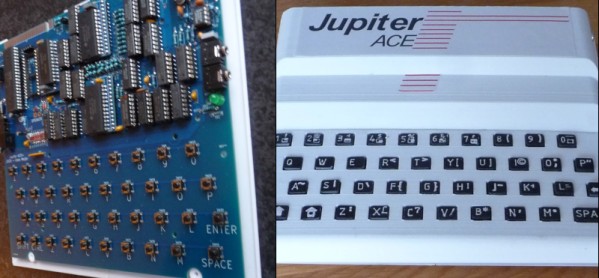What looks like a Sinclair ZX81 but runs Forth? If you said a Jupiter ACE, you get a gold star. These are rare because ordinary people in 1982 didn’t want Forth, so only about 5,000 of the devices were sold. [Cees Meijer] assumes they are unaffordable, so he built a replica and shows you how you can, too. [Scott Baker] built one recently; you can see his video below.
The resemblance to the Sinclair computer wasn’t just a coincidence. Richard Altwasser and Steven Vickers were behind the computer, and both had worked for Sinclair previously. In addition to being famous for using Forth, the machine initially had a badly manufactured case and an unreliable keyboard. A later version tried to correct these issues, but there were fewer than 1,000 made. [Cees’] replica used a design from [Grant Searle] with some modifications.
We liked the realistic look of the 3D printed keyboard. The keyboard uses white plastic with raised letters. A quick black spray paint followed by sanding gives the appearance of black keys with white printed text.
Overall, this is a good-looking build of a computer you probably won’t see in person. We wish Forth had caught on in the early PC world, but it didn’t. [Grant] was prolific with replica computers, and [Cees] isn’t the only one who used that work as a starting point for their own projects. If you want real old-school Forth, you have to go back a few more years.













